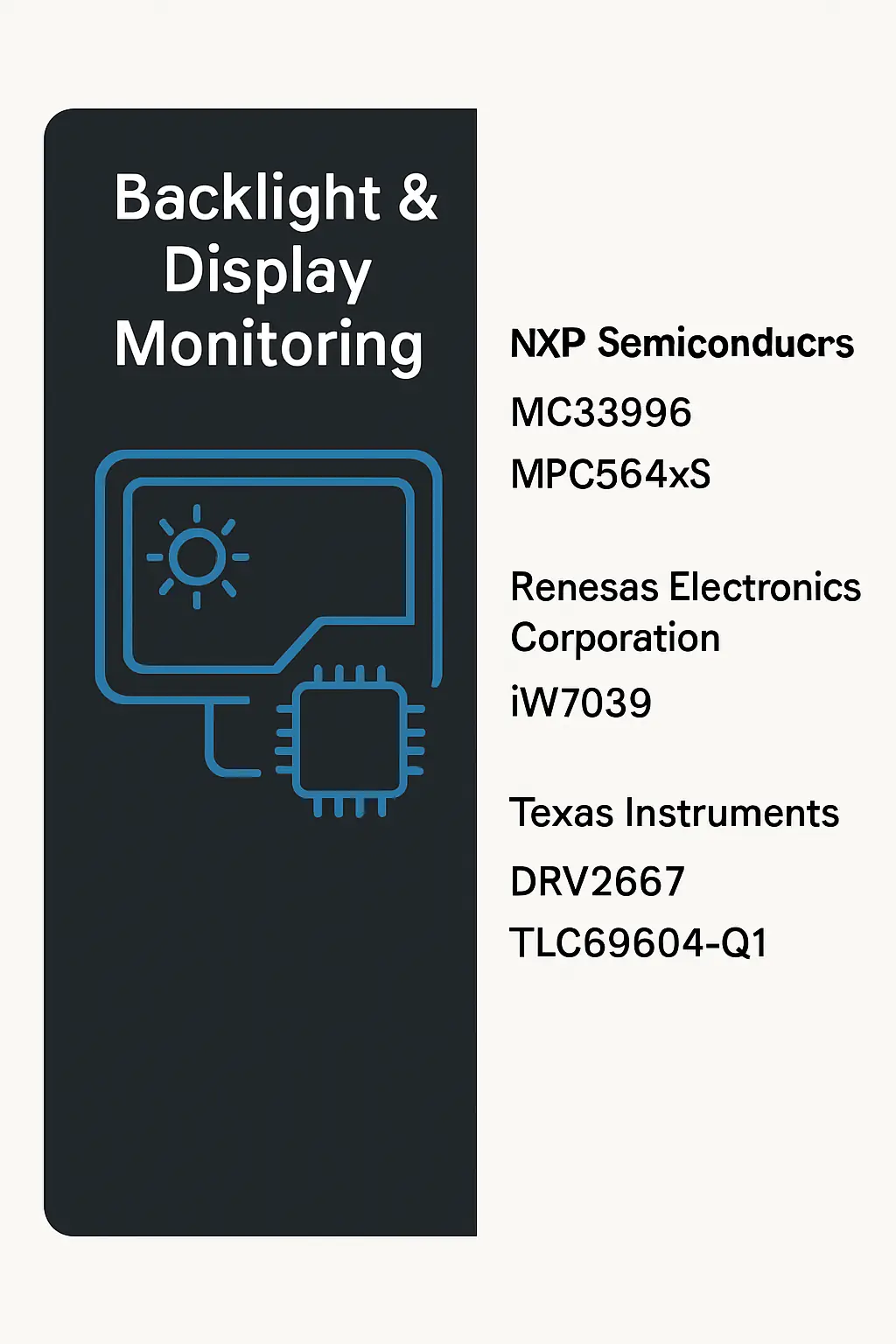Backlight & Display Monitoring
The Digital Cluster & Display is a key component of modern Infotainment & Digital Cockpit systems in Automotive Electronics, offering advanced visual interfaces for drivers. It integrates essential vehicle information such as speed, fuel level, and navigation into a high-resolution digital display, enhancing driver awareness and safety. This system also supports customizable layouts, allowing users to personalize their driving experience.
Designed for Backlight & Display Monitoring, the digital cluster ensures optimal visibility under various lighting conditions, improving readability and reducing driver distraction. It works in conjunction with sensors and control units to monitor display performance, ensuring consistent brightness and clarity.
This technology is widely used in modern vehicles, from compact cars to luxury models, supporting features like adaptive lighting, head-up displays, and integration with smartphone apps. Its application extends to connected and autonomous driving systems, where real-time data presentation is critical.
The Digital Cluster & Display plays a vital role in the evolution of in-vehicle user experience, combining functionality, aesthetics, and safety. It is an essential element in the development of next-generation automotive electronics, enabling smarter, more intuitive driving environments.
Details
Backlight & Display Monitoring

Related Parts
| Series Name | Description | Manufacturer Name | Attribute Description |
|---|---|---|---|
| NXP Semiconductors | 6-channel high-side/low-side driver, 5V supply, SPI interface, fault detection, 4A peak output current, operates from -40°C to 125°C, 48-pin LQFP package. | ||
| NXP Semiconductors | 32-bit Power Architecture core, up to 120 MHz, 2 MB Flash, 192 KB RAM, supports automotive applications with ASIL-D safety, integrated e200z core, multiple CAN, LIN, FlexRay interfaces. | ||
| Renesas Electronics Corporation | High-efficiency PWM controller for AC-DC power supplies, 65 kHz switching frequency, up to 94% efficiency, integrated soft-start, OVP, UVP, and OTP protection, 30 mW standby power. | ||
| Texas Instruments | Haptic driver with ERM/LRA support, 1.8V to 5.5V supply, I2C interface, built-in waveform library, auto-resonance tracking, 3W max power, 2.0mm × 2.0mm WQFN package. | ||
| Texas Instruments | 24-channel LED driver, 3.3V/5V supply, SPI interface, 12-bit PWM dimming, AEC-Q100 qualified, operates from -40°C to +125°C, supports RGB and monochrome LEDs, fault detection, programmable current up to 30mA per channel. | ||
| Texas Instruments | 6-channel LED driver, 3.5V to 45V input, up to 150mA per channel, supports PWM dimming, I2C interface, operates from -40°C to +125°C, designed for automotive applications. | ||
| Texas Instruments | 4-channel LED driver, 3.5V to 36V input, up to 105V boost, 16-bit PWM dimming, spread spectrum, I2C interface, operates from -40°C to +125°C, designed for automotive applications. | ||
| Texas Instruments | 12-channel LED driver, 3.3V/5V supply, SPI interface, 64-step PWM dimming, AEC-Q100 qualified, operates from -40°C to +125°C, supports automotive lighting applications. | ||
| Texas Instruments | 60-V, 1-A load switch with adjustable slew rate, low on-resistance, enable pin, and overcurrent protection for automotive applications. | ||
| Texas Instruments | 30-V, 1.6-A load, 12-mΩ FET, 1.1-ms rise time, adjustable soft-start, enable pin, thermal shutdown, -40°C to 125°C operating temperature. |








.png?x-oss-process=image/format,webp/resize,h_32)










